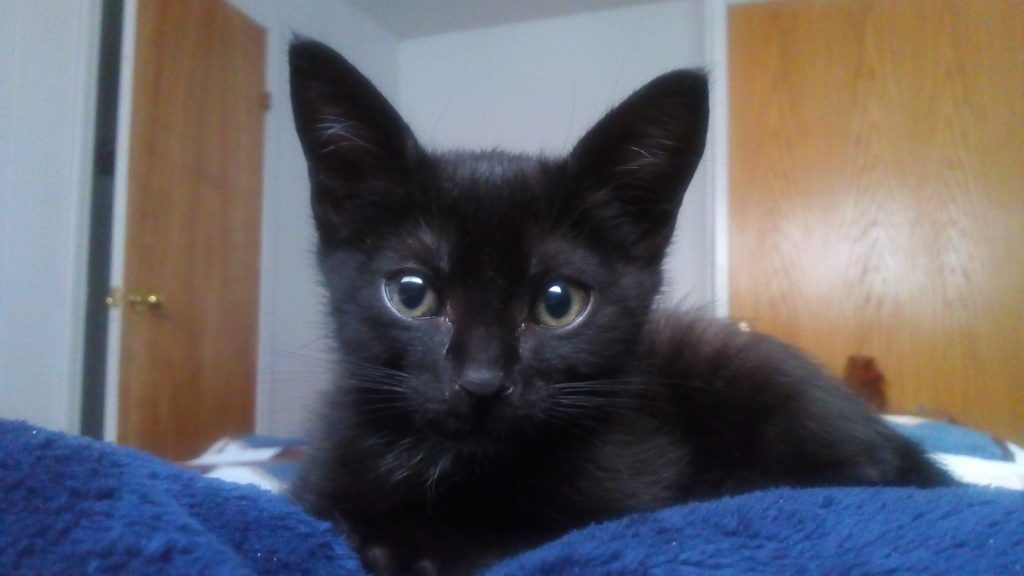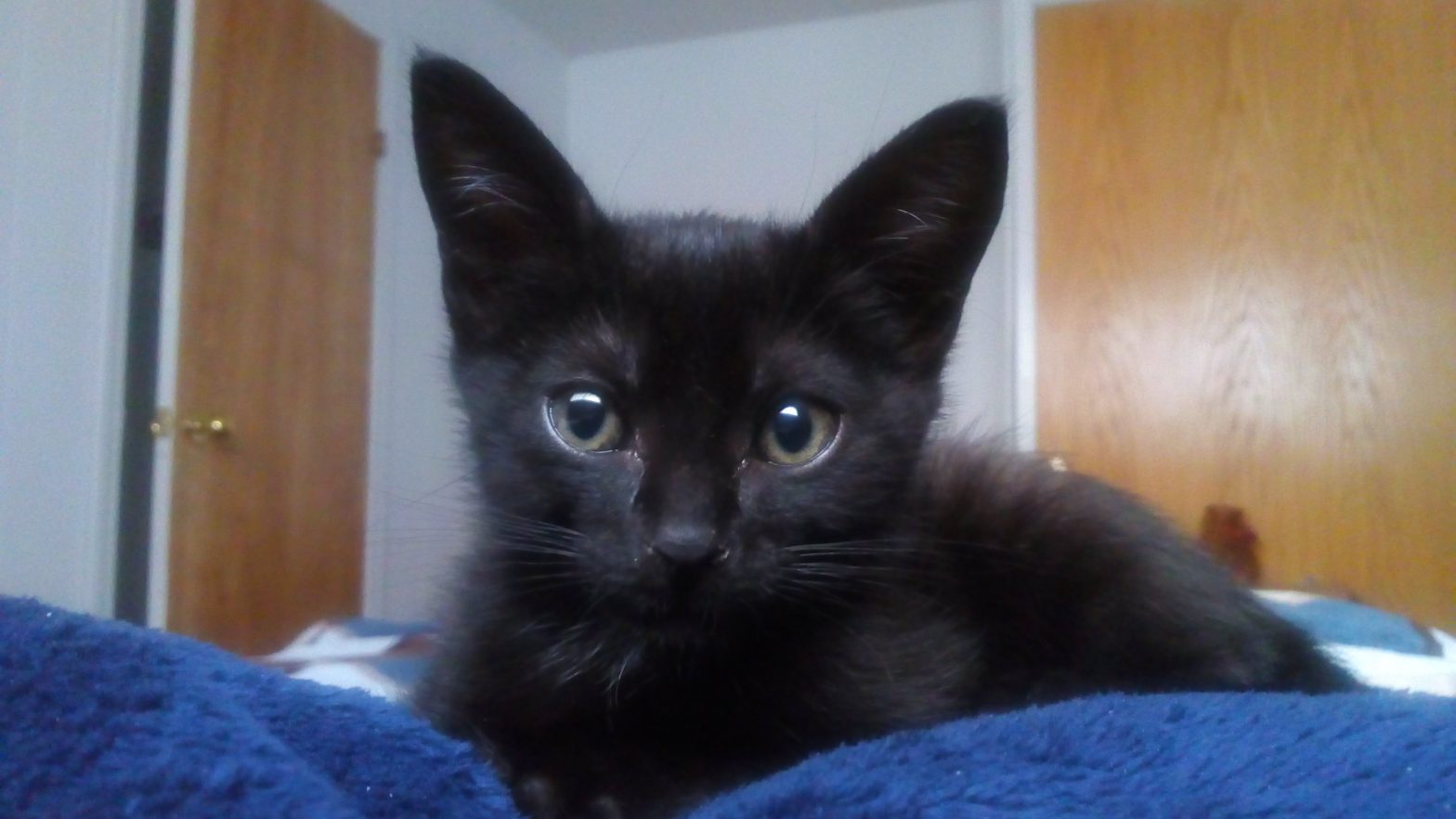A very common complaint among seed starting gardeners is that their pet, whether cat or dog, gets into the seedlings and eats a bunch of them. Learn how to grow your own cat grass and give your pet something other than your seedlings to nibble on.
With spring seed starting in full swing right now, I have discovered that my cat loves pea sprouts, mild flavored regular sprouts, and cat grass. So far, the peppers and tomatoes have been safe, thanks to her enjoying the second growth of pea microgreens when I left them on the kitchen table overnight. So, to keep the food plants and microgreens safer, I decided to grow some cat grass.
Cat grass is simply any type of grass or grain grown for cats to munch. There is no specific variety to grow for cats. I’m using wheat, as I have a lot of wheat berries. You could use whole rye, oats, wheat, or just regular outdoor grass seeds. Simply make sure that whatever seeds you are using are untreated (no fungicides).

How to grow cat grass:
You’ll need a growing container. I’m using a damaged tupperware type container, you can use egg shells, egg carton sections, yogurt containers, or even a pie plate or other aluminum baking pan.
Regular potting soil works well for this, you don’t need to use seed starting mix. You’ll need just enough to half fill your container.
Wheat or other grass seeds, about 1 tablespoon. Two tablespoons if you have a broad flat container.
Soak the wheat seeds for 4 hours, or until they appear fully hydrated. The seeds will about double in size in that time.
Dampen down your potting mix, and make sure it is fully hydrated. Many potting soils are hydrophobic due to the peatmoss, so dampening them down in advance will help your seeds grow.
Sprinkle the soaked seeds evenly across the surface of the soil and pat down firmly. Add a thin layer of damp soil over top of the seeds.
Place your planted cat grass to the side, and wait for germination. Wheat takes about 2-3 days to germinate.
Cover the seeds with a dark cloth for 24 hours after germination. This encourages rapid “leggy” growth. Then place them under a grow light, or in direct window light for the next day to green up. The grass should be a bright green with one or two days light exposure.
How to Use your Cat Grass
Once the grass is 3 inches high, or one inch taller than the edge of it’s planting container, place it where your cat can access at will. Make sure to water the cat grass every second day, so it doesn’t wilt and stays happy.
The shallowness of the growing container will make the grass dry out quickly if it is not regularly watered.
I’m keeping my cat grass underneath my seedling table so that if my cat decides to go on a night time snacking spree the grass will be the first thing she notices. Place your cat grass wherever you think your cat will access it easiest, by their food dish may also be a good spot.
When the grass is about half eaten, depending on how long it takes, start a new container of cat grass for your pet.
Note that using wheat or rye grains to start cat grass containers means you won’t have to buy specially branded “cat grass” growing containers and refills from the pet store. Now that you know how to grow cat grass, from grain, your other seedlings will be protected.
Variations for your pet’s enjoyment
Once you’ve mastered how to grow cat grass, you can mix it up. Your pet’s salad bar doesn’t have to be just grain seeds. You can add some field peas, or catnip seeds to make it more interesting and more attractive. My cat loves the sweet pea microgreens and will snack on them if I leave my back turned and the container accessible. So adding a few pea seeds to the grass mix makes her happier with her salad bar.
My cat also loves human sprout mixes, as long as they’re not spicy, so adding some brassica seeds, alfalfa, or clover to the mix can be beneficial.
The best thing with cat grass is that your pet determines how much, and when, they want it. So you can mix up a few mild seeds with the grains and see which ones your pet likes the most.

